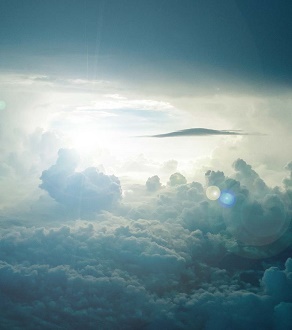 Sirach 3:17-18,20-28-29
Sirach 3:17-18,20-28-29
 Hebrews 12:18-19,22-24A
Hebrews 12:18-19,22-24A
 Luke 14:1,7-14
Luke 14:1,7-14
While the focus of this Sunday’s readings is humility (“but the one who humbles himself will be exalted” (Luke 14:11)) and helping the poor and weak (“when you hold a banquet, invite the poor, the crippled, the lame, the blind” (Luke 14:13)), let’s not lose sight of the significance of the theme of the second reading. What’s really remarkable about this Hebrews passage is the author’s ability to see the invisible and awe-inspiring reality underlying a setting that many people see as just another chapter of Israel’s history. Let me explain.
God, who is majestic and omnipotent, can be frightening when He appears to us lowly mortals, so we learn from this Sunday’s second reading. Referring to Israel’s experience at Mount Sinai as recorded in Exodus 19 and Deuteronomy 4, the author of Hebrews recalls the terrifying scene of epiphany when Yahweh descended upon the mountain with a dramatic display of fire and smoke and blaring trumpets (Heb 12:18; Ex 19:16-20; Deut 4:11) - a scene that made even Moses tremble (Heb 12:21).
The author of Hebrews takes great pains to convince his readers that what Israel experienced at Mt. Sinai, a special place of liturgy, or “a special altar” if you will, which “could be touched” (v.18) or seen, mysteriously gives us a glimpse into the sacred sanctuary of heaven – the heavenly altar - that cannot be touched or seen. Who are the people celebrating this celestial liturgy of heaven? “Countless angels”, “the firstborn enrolled in heaven”, “the spirits of the just made perfect”, “God the judge of all”, and Jesus the mediator of a new covenant” (vv. 22-24). What are they doing up there in the presence of God and His Son? Worshiping with great joy.
The two places, one earthly and the other heavenly, one visible the other invisible, are somehow closely connected – Mt. Sinai pointing to the sacred sanctuary of heaven, the Mt. Sinai liturgy culminating in the heavenly liturgy. And the author of Hebrews, with his eyes of faith, sees it! He sees Mt. Zion, which symbolizes the heavenly Jerusalem (“you have approached Mount Zion and the city of the living God, the heavenly Jerusalem” (v. 22)), in Mt. Sinai. He sees the Church Triumphant in Israel, an integral part of the Church Militant. He sees “Jesus, the mediator of a new covenant”, in Moses, the mediator of Israel (v. 24). Above all, he sees the joy of heavenly worship in the fear that the lowly mortals, particularly the Israelites on Mt. Sinai, exhibit on seeing God.
The author of Hebrews sees the future in the present, the invisible underlying the visible, the sacred through the earthly, the extraordinary out of the ordinary because he sees through the eyes of faith – faith which “is the realization of what is hoped for and evidence of things not seen” (11:1). What he sees as happening at Mt. Sinai, we also need to see as happening in the Mass liturgy because at Mass, we are already in heaven! Let’s conclude this reflection with an astounding statement extracted from the Catechism which bears much resemblance to the Hebrews passage that is being discussed:
“In the earthly liturgy we share in a foretaste of that heavenly liturgy which is celebrated in the Holy City of Jerusalem toward which we journey as pilgrims, where Christ is sitting at the right hand of God, Minister of the sanctuary and of the true tabernacle. With all the warriors of the heavenly army we sing a hymn of glory to the Lord…” (CCC 1090).
